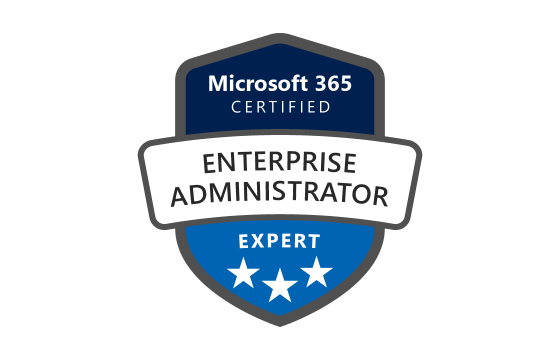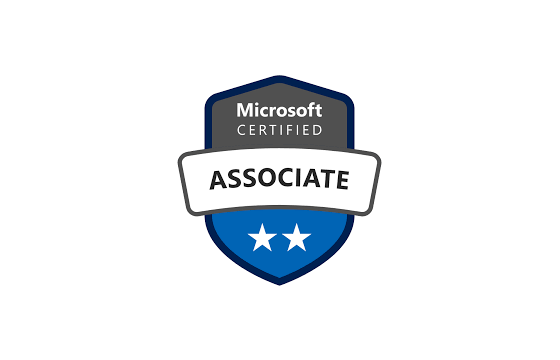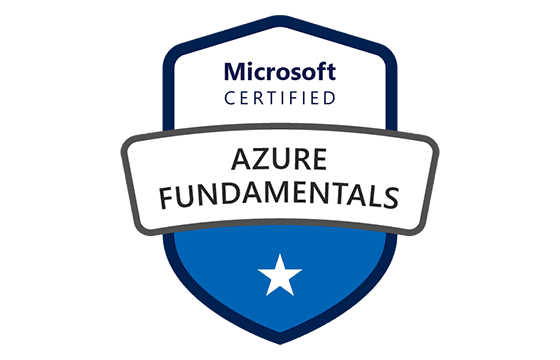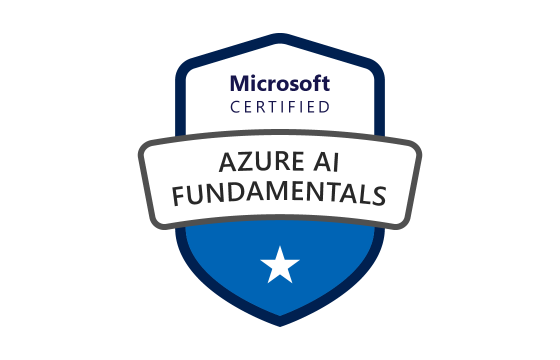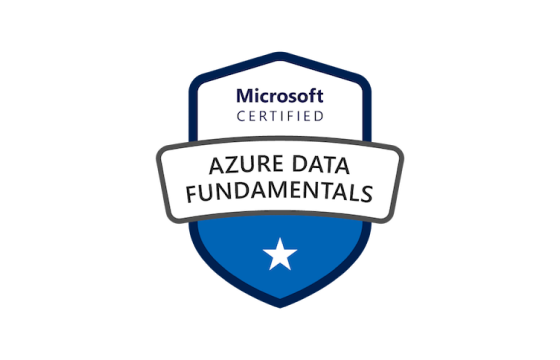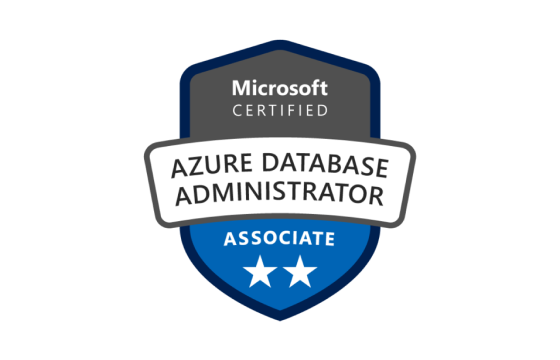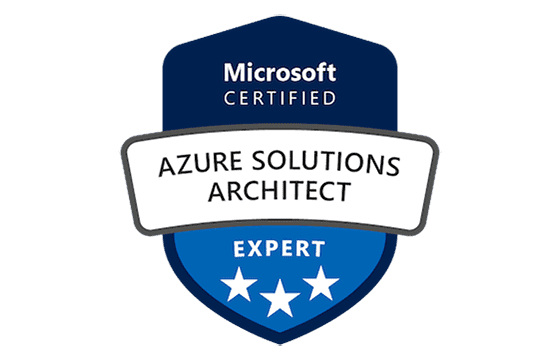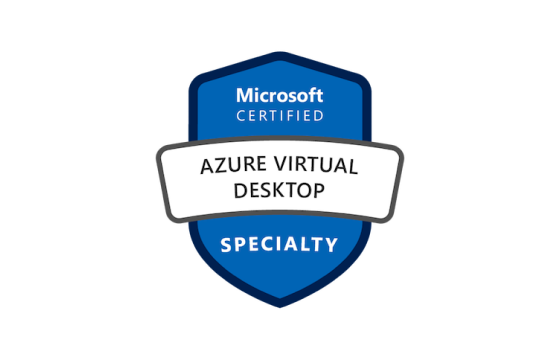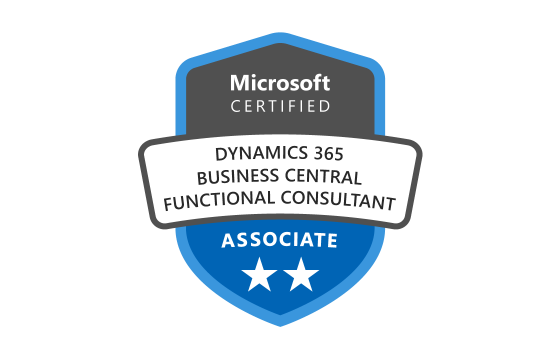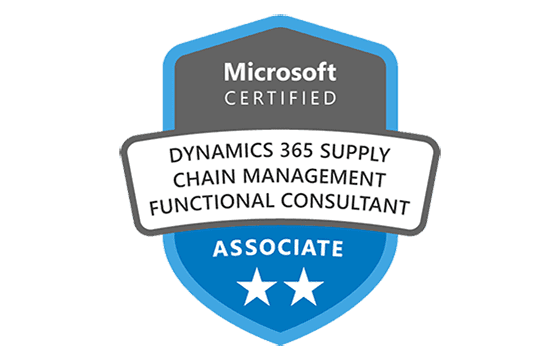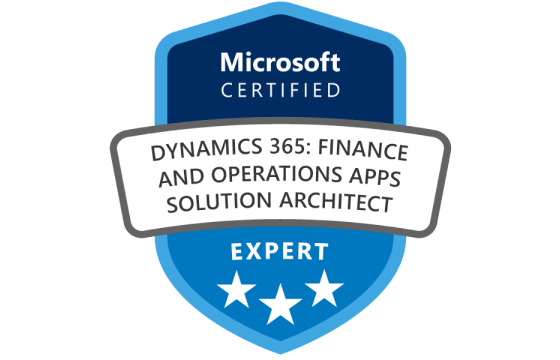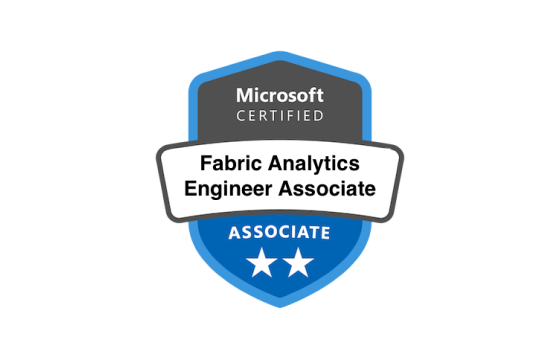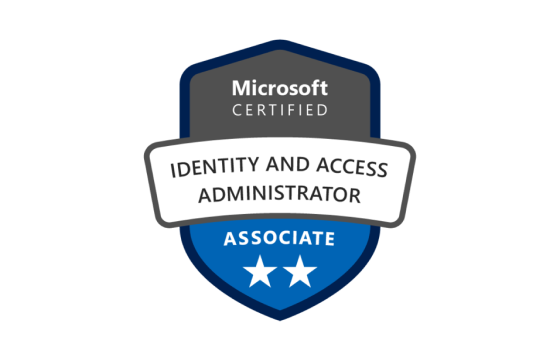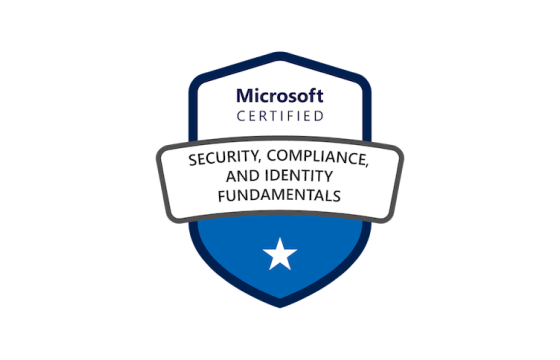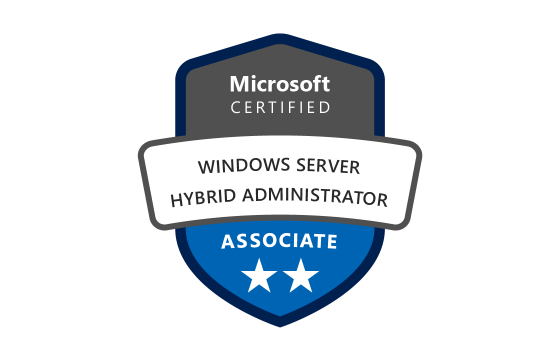Pass Your Microsoft 70-547 Exam Easy!
Microsoft 70-547 Exam Questions & Answers, Accurate & Verified By IT Experts
Instant Download, Free Fast Updates, 99.6% Pass Rate
Archived VCE files
| File | Votes | Size | Date |
|---|---|---|---|
File Microsoft.SelfTestEngine.70-547.v6.0.CSharp.by.Certblast.80q.vce |
Votes 1 |
Size 447.88 KB |
Date Jul 30, 2009 |
Microsoft 70-547 Practice Test Questions, Exam Dumps
Microsoft 70-547 (PRO: Designing and Developing Web-Based Applications by Using the Microsoft .NET Framework) exam dumps vce, practice test questions, study guide & video training course to study and pass quickly and easily. Microsoft 70-547 PRO: Designing and Developing Web-Based Applications by Using the Microsoft .NET Framework exam dumps & practice test questions and answers. You need avanset vce exam simulator in order to study the Microsoft 70-547 certification exam dumps & Microsoft 70-547 practice test questions in vce format.
Microsoft’s trajectory in shaping enterprise application design has been defined by a pragmatic blend of architectural rigor and pragmatic toolsmithing. For practitioners who aspire to build robust, maintainable solutions, the vendor’s ecosystem offers not only libraries and runtimes but also a conceptual scaffold that turns design principles into repeatable practice. Within that scaffold lies a lineage of learning and validation that guides professionals from basic craftsmanship to disciplined architecture. One way to understand this journey is to examine how formalized knowledge — including certification references such as 70-547 — anchors the abstract notions of architecture into concrete, workplace-ready skills without reducing them to rote checklists.
At the heart of Microsoft’s professional framework is the insistence that software design must be anticipatory. Applications do not live in isolation; they operate within ecosystems that change, scale, and interconnect. The reference to 70-547 functions as a touchstone for this broader orientation: it encapsulates an emphasis on layered architecture, service orientation, and the interplay of UI, business logic, and data access in enterprise-grade solutions. While one may debate syllabi and exam items, the enduring value of such a reference is its orientation toward systems thinking: understanding dependencies, designing for testability, and creating boundaries that reduce entropy as requirements evolve.
Modular design is not merely a fashionable phrase in Microsoft’s approach — it is a practical mandate. Developers are taught to delineate responsibilities clearly so that each module can evolve independently. The ramifications are profound: maintainability costs decline, parallel development becomes feasible, and systems can be refactored incrementally rather than rewritten. The pedagogical content associated with professional validation often stresses these exact outcomes, emphasizing patterns that favor composition over monolithic constructions. The result is software that supports business agility rather than obstructing it.
A second pillar of this philosophy is the pragmatics of data stewardship. Microsoft’s ecosystem supplies a rich array of data access strategies, and experienced architects are expected to select approaches that balance consistency, performance, and scalability. The reference framework behind professional training addresses concurrency control, transaction design, and data caching strategies in a way that mirrors real-world trade-offs. Properly engineered data layers free application layers from unnecessary complexity and provide a stable foundation upon which user experiences and business processes can reliably sit.
Security and identity management also occupy the central stage in Microsoft-centric architectures. Modern enterprise applications must defend against a spectrum of threats while offering seamless user experiences. The syllabus and professional guidance associated with the vendor’s advanced studies articulate how to integrate authentication protocols, authorization models, and secure communication channels into design from the outset. This is not an afterthought but an implicit requirement: the system’s architecture needs to be cognizant of trust boundaries and the consequences of exposing services across networks. By instilling these considerations early in the design phase, developers produce systems that are resilient and auditable.
Another indelible feature of the vendor’s approach is the promotion of service orientation and API-driven design. Applications are increasingly composed of discrete services that expose well-defined contracts. This pattern enables reuse, allows independent scaling, and simplifies cross-team collaboration. Guidance tied to professional certification explains not only how to construct services but also how to govern them: versioning strategies, contract evolution, and backward compatibility are among the pragmatic concerns covered. Embracing service orientation does more than decouple components; it establishes a lingua franca for systems to interoperate reliably across organizational boundaries.
User experience design often sits in tension with the demands of enterprise architecture, yet the vendor teaches how to reconcile these forces. The ideal application offers a clean, responsive interface while remaining backed by robust, testable logic. The framework of study emphasizes the separation of presentation and behavior so that UI changes do not cascade into wholesale business logic rewrites. This principle, while superficially simple, is a recurring theme in professional education: it’s the mechanism that enables teams to iterate on user-facing features without destabilizing the underlying system.
Testing and quality assurance are elevated from optional disciplines to integral design considerations. Under the vendor’s structured guidance, testability shapes component contracts and interface boundaries. Unit testing, integration testing, and system-level validation are treated as complementary strands of a rigorous quality fabric. Engineers learn to instrument applications for testability, apply dependency injection where needed, and use mocking as a way to validate interactions without incurring the brittleness of external dependencies. The practical upshot is architecture that invites verification rather than resisting it.
Performance engineering and scalability are not addenda but core design imperatives. Applications must respond gracefully under varying loads, and the vendor’s doctrine provides multiple patterns to achieve elasticity: asynchronous processing queues, caching strategies, stateless service design, and careful partitioning of responsibilities. Designers are encouraged to think in terms of throughput and latency trade-offs and to model how an application behaves under stress. This mindset keeps performance from being a last-minute optimization and makes it a planning parameter from the earliest design conversations.
Interoperability is another recurring theme. Enterprises rarely standardize on a single stack; heterogeneous systems must coexist, and Microsoft’s architectural guidance often emphasizes open contracts, RESTful services, and standardized data formats that help disparate systems interoperate. The educational material and professional validation processes reflect this reality by rewarding designs that facilitate integration: well-documented APIs, transactional boundaries that can cross technology stacks, and adapters that mediate between legacy systems and modern services. Designing for coexistence is an essential competency for any architect operating in large organizations.
Operational considerations complete the picture. Architectural design is incomplete without a deployment and monitoring strategy that recognizes the realities of production environments. The vendor’s advanced guidance addresses logging, health checks, diagnostics, and the instrumentation necessary for observability. Architects learn to embed metrics and telemetry into their designs so that operations teams can detect anomalies proactively, trace performance regressions, and support production troubleshooting without intrusive changes. This operational awareness is a hallmark of mature design practice.
The learning pathway tied to professional validation is not merely technical instruction; it cultivates judgment. Architects learn to evaluate trade-offs, justify patterns, and select strategies that align with business priorities. The curriculum associated with thorough professional training often includes scenario-based problem solving where candidates must balance maintainability, time-to-market, cost, and risk. These exercises develop a pragmatic sensibility: the best architecture is not the one that scores perfectly on theoretical metrics, but the one that fits the organization’s constraints and future ambitions.
A lesser-appreciated dimension of the vendor’s framework is its insistence on design documentation and communication. Robust architectures are supported by concise, accurate artifacts: diagrams that reveal intent, decision records that capture rationale, and specifications that enable consistent implementation. These artifacts reduce ambiguity, align stakeholders, and provide a living record that eases future evolution. Professional guidance emphasizes the discipline of documenting architectural decisions, which transforms ephemeral design intuition into institutional knowledge.
Finally, there is the cultural component: the vendor’s ecosystem fosters collaborative craftsmanship. Tools and guidance are shaped to encourage teamwork, continuous improvement, and shared ownership. Teams learn to pair design with incremental delivery, to gather feedback quickly, and to use empirical data to refine architecture. This cultural orientation is as important as any specific technology because it determines whether architectural ideals become a practiced reality.
Microsoft’s professional framework for enterprise application design — often referenced in training and validation resources such as 70-547 — codifies a comprehensive approach to building resilient systems. It balances theoretical foundations with pragmatic guidance, insists on design-time consideration of security and scalability, and stresses collaboration and observability. For practitioners, engaging with this body of knowledge clarifies how to transform design ideals into durable, real-world solutions that meet both technical and business imperatives.
Microsoft’s Architectural Discipline and the Transformation of Modern Software Design
The evolution of modern software architecture owes much to the disciplined frameworks established by Microsoft. Across decades of development, the vendor has sculpted an approach that blends engineering precision with adaptability, empowering developers to translate abstract business challenges into structured, high-performing solutions. What distinguishes Microsoft’s methodology is not only its technological scope but also its insistence on architectural discipline — a mindset cultivated through years of enterprise experience, codified through its professional standards, and validated through specialized certifications that emphasize solution design, scalability, and sustainability.
From the earliest iterations of enterprise applications, Microsoft recognized that software complexity was not a problem to be solved with mere lines of code but with well-defined architecture. The architectural patterns that emerged within its ecosystem were responses to real-world constraints — scalability, maintainability, and interoperability. The certification framework associated with advanced solution design, historically aligned with the 70-547 exam, encapsulates this evolution by teaching architects to balance form and function, design and performance, user experience, and enterprise integration. In doing so, Microsoft turned software development into an art form guided by engineering science.
The foundation of this discipline begins with understanding architecture as a living organism. In Microsoft’s vision, applications are not static assemblies but dynamic systems that evolve alongside business requirements. A design that works today must be flexible enough to adapt tomorrow without collapsing under technical debt. Thus, Microsoft’s approach emphasizes modularity, service abstraction, and reusable design principles that allow individual components to scale independently. Developers are trained to visualize applications not as linear constructs but as interlinked services capable of seamless communication through defined contracts and standardized protocols.
Central to this methodology is the principle of separation of concerns. The vendor’s design frameworks — from early .NET architecture to modern cloud-based models — are rooted in this separation. Each layer of an application has a distinct responsibility: the presentation layer handles user interaction, the business layer enforces logic and workflows, and the data layer ensures storage and retrieval consistency. By isolating these domains, Microsoft empowers developers to modify one component without endangering the stability of others. This separation is a practical application of architectural clarity, reducing dependencies and facilitating both testing and maintenance.
What differentiates Microsoft’s architectural doctrine from more fragmented approaches is its holistic understanding of the application lifecycle. The vendor does not see design as a preliminary phase but as an ongoing process that continues through deployment, monitoring, and iteration. This life-cycle-driven perspective is embedded in its professional standards and educational frameworks. Developers and architects are encouraged to integrate design thinking with operational awareness. This means that architectural decisions are evaluated not only for their immediate functionality but for their sustainability over time — how they behave under stress, how they scale under load, and how they evolve through updates.
One of Microsoft’s most enduring contributions to software architecture is its commitment to object-oriented principles. Encapsulation, inheritance, and polymorphism are not simply academic constructs within this paradigm; they are instruments for managing complexity in enterprise-scale systems. By enforcing object-oriented design through its frameworks, Microsoft ensures that developers adopt patterns of reusability and abstraction as second nature. This discipline creates a shared architectural language that transcends teams and projects, promoting uniformity without stifling creativity.
In contemporary environments, the vendor’s architecture extends far beyond monolithic designs. Service-oriented architecture, microservices, and event-driven systems have become the hallmarks of modern development under Microsoft’s guidance. The transition toward distributed systems reflects an awareness that scalability and resilience require decentralization. Microsoft’s frameworks provide both the tooling and the philosophy for implementing such distributed patterns without losing control of cohesion. Each service operates autonomously, yet adheres to shared governance principles, ensuring overall system harmony.
The company’s architectural standards also redefine how developers approach performance optimization. Performance, in Microsoft’s vision, is not merely a product of faster hardware or efficient algorithms; it is a consequence of good design. The certification framework derived from 70-547 reinforces this by urging developers to embed performance considerations into their architectural decisions from the outset. This includes caching strategies, asynchronous communication models, load balancing techniques, and efficient data access layers. Performance engineering thus becomes an architectural mindset rather than an afterthought.
Equally significant is Microsoft’s persistent emphasis on scalability. As the digital world expanded into cloud-driven ecosystems, scalability transformed from a desirable feature into a business necessity. The vendor’s architectural philosophy addresses this evolution through distributed computing principles, elasticity models, and stateless service design. The transition from on-premises applications to cloud-native architectures demonstrates Microsoft’s adaptability in translating traditional design values into modern paradigms. Cloud architecture does not replace the old principles; it amplifies them.
Security forms another cornerstone of Microsoft’s architectural discipline. The company advocates for a security-by-design model that integrates safeguards at every layer of development. Authentication, authorization, encryption, and auditing are not added after development—they are intrinsic to design. This principle, embedded in Microsoft’s professional framework, ensures that applications are fortified from inception rather than retrofitted for compliance. The architectural mindset here is defensive yet fluid: systems are designed to anticipate vulnerabilities, respond to threats, and maintain trust without compromising user experience.
Perhaps one of the most visionary aspects of Microsoft’s framework is its foresight in interoperability. The modern enterprise operates across diverse platforms and technologies, and no single vendor can dominate every environment. Microsoft, recognizing this reality, has consistently promoted open standards, extensible APIs, and cross-language compatibility. Its frameworks encourage developers to build bridges rather than walls. This interoperability philosophy is crucial for enabling hybrid systems — combinations of legacy software, modern cloud services, and third-party integrations — to operate as unified ecosystems.
To ensure that such architectural ideals translate into practice, Microsoft’s professional programs focus on design validation and continuous improvement. Testing, once viewed as a post-development stage, is elevated to a design principle. Architects are taught to create systems that invite testing — systems that are modular, observable, and traceable. Unit testing, integration testing, and performance profiling are embedded within the architecture itself. By promoting testability as a design criterion, Microsoft ensures that quality becomes a natural consequence of good architecture.
Collaboration is another key tenet of Microsoft’s architectural culture. The company’s integrated development environments, particularly those aligned with enterprise solutions, embody the philosophy that architecture is a shared responsibility. Tools for version control, collaborative modeling, and code analysis transform software development into a collective discipline. Architects and developers are no longer isolated actors; they work within synchronized feedback loops where decisions are visible, discussions are documented, and solutions evolve iteratively. This collaborative architecture is as much about people as it is about patterns.
Beyond tools and methodologies, Microsoft’s architecture is guided by a deep respect for adaptability. The company understands that technology is transient while architectural principles are enduring. The educational lineage derived from advanced certification paths underscores this philosophy. It teaches professionals not to cling to tools or versions but to internalize design concepts that transcend technology shifts. Whether the underlying implementation language changes or the deployment platform evolves, the architectural patterns — modularity, reusability, abstraction, separation of concerns — remain constant.
In the age of cloud transformation, Microsoft’s architectural philosophy finds its most mature expression. The movement from traditional client-server systems to microservices and containerized applications reflects not a rejection of earlier design tenets but their logical progression. Scalability, resilience, and continuous deployment become architectural constants. The cloud becomes not merely a hosting environment but a design canvas where elasticity, redundancy, and automation converge. Microsoft’s frameworks, particularly those integrated with cloud-native services, embody these principles, allowing developers to implement architectures that adjust dynamically to workload fluctuations.
Another defining element of Microsoft’s design heritage is the emphasis on business alignment. Software architecture is not only a technical blueprint; it is a strategic instrument for achieving organizational goals. The vendor’s standards teach that every architectural decision must be justified by business value. Whether it’s improving maintainability, reducing downtime, or enabling faster feature delivery, the architecture must articulate measurable outcomes. This philosophy transforms architects from technical specialists into strategic enablers who bridge business intent with technological execution.
The integration of artificial intelligence and data analytics into Microsoft’s ecosystem further exemplifies its forward-thinking design ethos. Applications are no longer passive tools; they are intelligent participants in business processes. Architectural models now incorporate predictive analytics, real-time data streaming, and adaptive user experiences. Microsoft’s frameworks facilitate these advancements while preserving the discipline of clean design. The challenge of blending intelligence with structure has been met by expanding traditional architectures to include machine learning pipelines, data governance frameworks, and scalable analytics components.
Documentation, often underestimated, is treated as a living artifact within Microsoft’s architectural culture. It is not a static deliverable but a communication medium. Architecture diagrams, component descriptions, and decision logs serve as the connective tissue between concept and execution. Professional training reinforces this discipline, emphasizing that well-documented architectures accelerate onboarding, facilitate audits, and preserve design intent across project lifecycles. Clarity of documentation reflects clarity of thought — a hallmark of Microsoft’s engineering philosophy.
The human dimension remains central to Microsoft’s design narrative. The company recognizes that architecture is both a science and an art — a balance between analytical precision and creative problem-solving. Developers who master its frameworks are not just implementers of code; they are architects of systems, translators of business logic into digital form, and guardians of maintainable design. The professional standards and learning pathways inspired by Microsoft’s certifications, including those historically represented by 70-547, serve as a compass guiding these professionals toward excellence.
Microsoft’s architectural discipline represents a synthesis of structured methodology and adaptive evolution. It codifies decades of best practices into a living framework that remains relevant in an age of rapid transformation. The integration of security, scalability, interoperability, and collaboration within a unified architectural vision has redefined what it means to build modern software. Every application designed under this philosophy carries the imprint of thoughtful architecture — systems engineered not merely to function, but to endure, evolve, and inspire innovation.
Microsoft’s Strategic Integration of Application Frameworks in Modern Enterprise Architecture
In the evolving realm of enterprise computing, Microsoft’s architectural doctrine continues to represent a fusion of stability, innovation, and foresight. For professionals trained under the advanced frameworks of Microsoft’s design ecosystem—concepts once reinforced through academic and certification models such as those embodied in references like 70-547—the focus is not merely on technical execution but on strategic integration. The objective is to construct software systems that do more than function—they must interconnect, adapt, and sustain organizational growth through an intelligent balance of modularity and scalability.
The cornerstone of Microsoft’s design philosophy lies in architectural alignment with business processes. Software cannot be isolated from the rhythm of organizational objectives. Each application, service, and module must map onto tangible workflows, producing a symphony of data flow and operational coherence. Within Microsoft’s ecosystem, this is realized through the orchestration of interconnected components that leverage shared contracts, consistent communication standards, and unified identity systems. The aim is to dissolve silos, ensuring that information flows seamlessly across departments and technologies, creating what may be termed as architectural transparency.
A key tenet here is adaptability through abstraction. Microsoft’s approach teaches developers and architects to view abstraction layers as both protective and enabling. When crafted judiciously, abstraction allows technologies to evolve without rupturing dependent systems. The encapsulation of business logic and service interfaces, for example, enables teams to reengineer a subsystem or replace its underlying technology while preserving the integrity of its public contract. This is not merely a coding pattern but a design philosophy—one that safeguards enterprise longevity. It ensures that innovation, while frequent, never becomes destructive.
This concept connects naturally to the idea of interoperability. Enterprises often find themselves navigating hybrid landscapes—some systems are cloud-native, others reside on-premises, and still others straddle both worlds. Microsoft’s architectural strategy accounts for this hybridity by promoting standardized communication protocols and transport-agnostic service interfaces. Frameworks like Windows Communication Foundation, and later evolutions in service-based technologies, illustrate how Microsoft anticipated the modern need for composability. Through careful adherence to contract-based interfaces and service discovery, the architecture sustains heterogeneity rather than resisting it.
Within Microsoft’s application design continuum, the role of data remains central. The guidance emphasizes that data is not an afterthought but a living entity within the system’s architecture. Well-designed applications separate the semantics of data from its physical storage, allowing architects to refactor, shard, or migrate databases without breaking business processes. This independence between data models and data stores allows organizations to evolve their information strategies incrementally, maintaining operational continuity while embracing new analytics or cloud-based storage technologies.
Security, too, is deeply woven into the architectural fabric. The advanced guidance tied to Microsoft’s professional standards insists that authentication and authorization be designed at the inception of every solution. Security boundaries are mapped onto architectural tiers: presentation layers handle minimal trust responsibilities, business layers enforce rules, and data layers apply strict integrity controls. Such a distribution ensures the system is neither too permissive nor too rigid. The architecture thereby reflects a principle of least privilege that remains practical and auditable. Additionally, Microsoft’s orientation toward secure development lifecycle practices embeds threat modeling and vulnerability mitigation as continuous, rather than periodic, concerns.
The notion of scalability, while often associated with infrastructure, begins at design time in Microsoft’s worldview. Scalability must be intrinsic to architectural form, not grafted on after deployment. Architects are encouraged to envision usage growth, data surges, and interaction complexity long before implementation. The use of asynchronous patterns, message queues, and distributed caches emerges naturally from this foresight. Moreover, Microsoft’s guidance teaches professionals to evaluate not just vertical scalability—adding power to a single node—but also horizontal scalability, where identical service instances expand elastically. Such foresight allows systems to grow without fracturing under load.
An area of increasing importance within Microsoft’s architectural practice is the blending of human-centered design with systemic precision. Applications are, after all, used by people, and their success depends on clarity and responsiveness. The design frameworks encourage architects to treat usability as a systemic property rather than a cosmetic one. This means planning for accessibility, reducing interface friction, and ensuring that visual responsiveness reflects backend agility. The ultimate goal is harmony: an architecture that is as intuitive to interact with as it is resilient to operate.
Testing remains a cornerstone of architectural integrity in Microsoft’s model. It is insufficient for systems to simply run—they must prove their correctness under variation. To that end, Microsoft’s advanced guidance advocates for test-driven design, automated integration checks, and continuous deployment pipelines. Architecture is viewed not as a static structure but as a living system that requires feedback. Tests provide that feedback loop, revealing regressions and validating assumptions. When tests are woven into the design, systems evolve gracefully instead of accumulating technical debt.
One often overlooked dimension of Microsoft’s design strategy is operational telemetry. Modern enterprise systems generate immense volumes of behavioral data: logs, metrics, and traces. Architects are advised to plan observability as a first-class design concern. Rather than tacking on monitoring later, observability becomes a guiding principle that influences naming conventions, component modularity, and even data schema design. This allows operations teams to visualize not just failure, but performance dynamics, usage patterns, and long-term reliability trends. Microsoft’s framework thus blurs the line between development and operations, fostering a DevOps culture before the term became ubiquitous.
An equally essential aspect of Microsoft’s professional architectural discipline is decision documentation. Architectural decisions, when left undocumented, degrade into institutional amnesia. To counteract this, teams are urged to maintain design rationales—records of why patterns were chosen, which alternatives were rejected, and how trade-offs were balanced. These documents become the living DNA of the system, empowering future architects to evolve the design intelligently rather than blindly. In Microsoft’s practice, this documentation also supports governance: reviewers and stakeholders can audit compliance with architectural standards without intrusive oversight.
Microsoft’s architectural framework further emphasizes the cultural and procedural aspects of collaboration. Tools alone cannot enforce good design; it requires a shared vision. Within the vendor’s paradigm, design reviews, iterative planning, and peer evaluation are encouraged as rituals that strengthen architectural cohesion. These practices cultivate collective ownership—no single developer is the architecture’s custodian, and no single decision exists in isolation. This cultural reinforcement of accountability ensures that architecture remains adaptable, sustainable, and continuously aligned with organizational goals.
The influence of such structured thinking extends beyond immediate software projects. By formalizing architectural reasoning through professional training and certification models, Microsoft establishes a lingua franca among developers, analysts, and architects worldwide. The consistency of vocabulary—services, layers, abstractions, contracts—makes collaboration across continents and industries feasible. It also supports mentoring and skill transfer, ensuring that expertise does not vanish when individuals move on. In many respects, the framework acts as a cultural repository for professional software design itself.
Looking at the broader technological horizon, Microsoft’s methodology proves remarkably durable. Even as paradigms shift toward microservices, containerization, and cloud orchestration, the underlying principles remain constant. Encapsulation, modularity, contract-driven integration, and testable design continue to serve as the compass for navigating change. This resilience demonstrates that architectural wisdom is not bound to any single framework or tool—it is a way of thinking, cultivated through deliberate study and professional discipline.
The integration of Microsoft’s architectural principles yields more than functional applications; it produces organizational capability. Systems designed under this philosophy tend to outlast transient technologies, remaining maintainable and secure across cycles of innovation. They encourage teams to think holistically—to view architecture not as a static plan but as an evolving dialogue between technology and purpose.
In essence, the architectural framework once encapsulated in professional standards like 70-547 symbolizes the convergence of theory, craftsmanship, and foresight. It transforms abstract principles into actionable blueprints that sustain the digital ecosystems of modern enterprises. In doing so, it bridges the gap between technical excellence and strategic agility—a bridge that continues to support the evolving ambitions of organizations operating within Microsoft’s ever-expanding sphere of influence.
Microsoft’s Enterprise Solution Framework: Engineering Resilience and Evolution in Modern Systems
In the vast ecosystem of enterprise software development, Microsoft’s architectural discipline serves as both compass and chronicle—a fusion of structured theory and pragmatic adaptation. Its architectural frameworks do not merely instruct developers on how to build; they cultivate a mindset that treats systems as evolving organisms, designed to endure change rather than resist it. The ethos underpinning Microsoft’s advanced professional foundations, historically encapsulated in learning blueprints such as 70-547, represents a philosophy of engineering resilience—where the success of a system lies not only in its launch but in its long-term adaptability.
Microsoft’s architecture-oriented pedagogy begins with a clear separation of concerns, a principle so elemental that it threads through every layer of enterprise system design. The separation between user interface, business logic, and data access is more than a matter of organization; it is the very foundation upon which maintainability rests. Each layer is a contract of responsibility, ensuring that a change in one does not irreparably disturb the others. In the Microsoft ecosystem, frameworks such as ASP.NET, along with data technologies like ADO.NET and Entity Framework, have matured around this philosophy—each offering well-defined boundaries to preserve the clarity of intent across tiers.
This tri-layered logic expands outward into distributed architectures, where modular services collaborate across organizational domains. A design that once lived within a single application now thrives as a federation of services communicating through contracts, queues, and messages. Microsoft’s modern guidance continues to emphasize that modularity is not fragmentation; rather, it is coherence through independence. A well-architected system behaves like an ecosystem—each component purposeful, replaceable, and observable. This modular resilience is what enables Microsoft-aligned architectures to scale across datacenters, clouds, and geographies without sacrificing the predictability that enterprises demand.
A crucial factor in sustaining architectural integrity over time lies in the discipline of consistent patterns. Patterns act as the grammar of system design—they enable different teams to communicate in a shared architectural language. Microsoft’s frameworks have long formalized this through guidance such as the Model-View-Controller paradigm, repository patterns, and layered abstractions for dependency inversion. These are not dogmatic recipes but intellectual tools that ensure predictability. When developers adhere to these patterns, they inherit a form of systemic intelligence: every component knows its role and communicates in a manner the architecture understands.
This pattern-based methodology intersects naturally with scalability design. From Microsoft’s perspective, scaling an enterprise application requires more than hardware—it requires elasticity in logic. As workloads grow, systems must partition gracefully, replicate intelligently, and degrade predictably under stress. The architectural tenets taught in advanced Microsoft frameworks push designers to model these conditions early. The idea is to treat scalability as a deterministic property of the design rather than an afterthought. Queue-based communication, caching mechanisms, asynchronous task scheduling, and distributed session management are all treated as design primitives, not performance hacks. By embedding scalability at the architecture’s core, systems become anticipatory rather than reactive.
At the same time, Microsoft’s approach to architecture gives equal prominence to maintainability. Enterprise applications are not monuments; they are living entities shaped by constant revision. Through its frameworks, Microsoft urges architects to design with maintenance as a metric. This entails creating abstractions that can be replaced without domino effects, crafting APIs that evolve without breaking compatibility, and documenting decisions that preserve institutional memory. Versioning, interface segregation, and backward compatibility strategies all serve this cause. In an ecosystem that often spans decades of evolution, this philosophy transforms architectural documentation into an insurance policy for sustainability.
The conversation around Microsoft’s design discipline would be incomplete without a deep exploration of security architecture. Security, in this paradigm, is never bolted on; it is architected in. From identity federation to role-based authorization, Microsoft’s methodologies ensure that security mechanisms are distributed appropriately across tiers. Authentication protocols like OAuth and Kerberos, along with secure configuration management, are treated as structural dependencies of the system. This disciplined integration ensures that as software evolves, its security model scales symmetrically. The aim is to achieve a security posture that is both adaptable and transparent—systems that can be audited, monitored, and refined without architectural contortion.
Data, often regarded as the lifeblood of an organization, occupies a central role within Microsoft’s architectural ideology. The goal is to make data both authoritative and accessible. By promoting data abstraction through repositories, Microsoft ensures that business logic interacts with data as an abstract capability rather than a hardwired dependency. This decoupling enables flexibility in how and where data resides—whether in SQL databases, distributed stores, or cloud-native solutions. Furthermore, the architecture anticipates the need for data migration, caching, and synchronization across distributed environments. These patterns reflect a forward-looking recognition that the locus of data will continue to shift in the digital enterprise.
In enterprise systems, integration is inevitable. Applications rarely exist in isolation; they are part of an ecosystem that spans legacy systems, partner platforms, and external APIs. Microsoft’s approach treats integration as an architectural discipline, not a patchwork exercise. Through frameworks emphasizing service contracts, data transformation, and asynchronous communication, Microsoft advocates for loose coupling and stable boundaries. Integration patterns such as message brokers, service buses, and adapters ensure that changes in one subsystem do not destabilize others. This adaptability is a hallmark of mature enterprise design—it preserves momentum in the face of continual evolution.
Beyond the technical scaffolding, Microsoft’s professional guidance underscores a cultural imperative: architecture is a living conversation among teams. Collaboration, peer review, and iterative refinement form the ecosystem in which design decisions mature. Architects are encouraged to cultivate transparency through design documentation, communicate trade-offs, and validate assumptions through prototypes. These practices establish a rhythm of learning that converts technical debt into institutional knowledge. The shared language that arises from these practices becomes a kind of cognitive infrastructure—one that transcends code and endures through organizational change.
Performance optimization also receives structural treatment in Microsoft’s architectural vision. Performance is not the outcome of clever tweaks; it is the product of foresight. By emphasizing early modeling and benchmarking, the architecture anticipates performance bottlenecks. Instrumentation, profiling, and telemetry are designed into the system from its inception. This allows developers to observe live behaviors, analyze patterns, and apply targeted refinements rather than speculative optimizations. The outcome is an architecture that grows stronger under observation—a system that evolves intelligently because it listens to its own operational signals.
The maturity of Microsoft’s architectural model is evident in its embrace of operational design. Modern enterprise systems do not end at deployment; they live within an ecosystem of monitoring, governance, and evolution. Microsoft’s design frameworks encourage architects to consider deployment topology, rollback strategies, and environment parity as part of the design. Continuous integration and delivery pipelines are viewed as architectural extensions, ensuring that every code change traverses a reproducible and verifiable path to production. The result is a closed feedback loop—development and operation become synchronized disciplines rather than opposing forces.
Perhaps the most profound aspect of Microsoft’s enterprise philosophy is its humility before change. The frameworks do not promise permanence—they promise adaptability. By acknowledging that technologies, paradigms, and organizational needs will continue to evolve, Microsoft’s architecture builds for uncertainty. This forward compatibility is a quiet triumph of engineering discipline. It means that every architectural decision carries within it the seed of its own renewal.
Thus, Microsoft’s enterprise solution framework, enriched by decades of cumulative insight and formalized through educational and certification pathways, remains one of the most enduring models of software craftsmanship. It transforms architecture from static documentation into a living dialogue between human intention and technological possibility. It instructs architects not only in how to construct but how to evolve—how to preserve the equilibrium between reliability and reinvention.
By situating resilience, scalability, and maintainability at its core, Microsoft’s architectural discipline transcends the lifecycle of individual technologies. It continues to shape how enterprises envision, build, and sustain systems that carry their operations into the next era of digital transformation. This is not a transient methodology; it is a lasting philosophy—one that teaches that the architecture of today must always be the foundation for the innovation of tomorrow.
Microsoft’s Evolutionary Architecture: Sustaining Innovation and Structural Integrity in Enterprise Solutions
In the dynamic world of enterprise systems, where technology evolves faster than governance frameworks can adapt, Microsoft’s architectural vision stands as an enduring model of controlled innovation. Its approach is neither rigid nor chaotic; it is a deliberately orchestrated equilibrium that binds consistency with evolution. The methodology behind Microsoft’s architectural discipline—reflected historically through professional standards and advanced competencies like those embedded in the learning frameworks once associated with 70-547—focuses on sustainability through intelligent structure. This sustainability is not achieved by resisting change but by designing for it, ensuring that software remains functional, adaptable, and relevant across technological generations.
At its core, Microsoft’s philosophy rests on the notion that architecture is the language of long-term value. In the enterprise sphere, value is measured not by the number of features an application possesses at launch but by its ability to continue delivering outcomes in a changing ecosystem. Thus, architecture becomes the vessel that carries innovation across time. Each module, service, and interface is a linguistic element within this larger syntax—together forming a coherent narrative of functionality. The architect’s challenge, in Microsoft’s view, is to compose this language with precision, so that its semantics remain valid even as its vocabulary evolves.
Central to this view is the disciplined application of modular decomposition. Microsoft’s frameworks emphasize that the path to maintainable complexity lies in encapsulation. By isolating logical domains and ensuring that they interact through stable contracts, architects create systems that absorb modification rather than fracturing under it. This is particularly relevant in enterprise environments where business rules, compliance constraints, and user expectations shift rapidly. Modularity ensures that such changes affect localized regions of the system instead of triggering systemic instability. The enduring relevance of this idea can be seen in Microsoft’s support for component-based architectures, microservices, and decoupled data flows—patterns that all trace their philosophical roots to modular reasoning.
A second pillar of Microsoft’s architectural sustainability lies in abstraction as a mechanism of protection. Abstraction is the architect’s armor against obsolescence. It shields higher layers from the volatility of technology choices beneath them. A data access layer that communicates through interfaces, a service contract defined in neutral terms, or a cross-platform API gateway all serve the same principle: insulation. Through abstraction, architects make systems language-agnostic, protocol-tolerant, and cloud-portable. It is the same design instinct that enables legacy applications built a decade ago to integrate seamlessly with contemporary infrastructures. This durability transforms architecture into an evolutionary artifact, capable of absorbing the passage of time.
Scalability, within Microsoft’s professional design ethos, extends beyond technical metrics; it becomes an expression of architectural foresight. Scaling is not simply about adding more servers—it is about designing systems that exhibit graceful proportionality under growth. Microsoft’s frameworks emphasize that scaling mechanisms must be embedded at the level of logic, concurrency, and data distribution. Caching strategies, asynchronous workflows, and sharded storage models are treated as architectural primitives rather than operational patches. This distinction matters because it converts performance into a structural attribute of the design. An architecture that scales smoothly under stress has been conceived with elasticity as an intrinsic law, not a conditional adjustment.
Microsoft’s treatment of interoperability reflects a similar long-view philosophy. In a world of hybrid infrastructures—where on-premises, cloud-native, and edge systems must collaborate seamlessly—interoperability defines the success of enterprise ecosystems. Microsoft teaches that interoperability is achieved not through endless adaptation but through the disciplined use of standards and shared protocols. A system designed around open contracts, language-neutral APIs, and standardized message formats can coexist within heterogeneous landscapes without friction. This principle allows organizations to evolve piecemeal: migrating components to the cloud, replacing data stores, or adopting new analytics engines while preserving architectural coherence. The ability to integrate without disintegration is a hallmark of Microsoft’s architectural maturity.
Security architecture, as articulated in Microsoft’s professional frameworks, operates not as an isolated layer but as a continuous thread. The secure design mindset begins at inception and persists through maintenance. Each component is designed with an explicit trust boundary, ensuring that data and operations crossing that boundary are validated and constrained. This approach promotes predictability and traceability—two qualities indispensable in enterprise-grade systems. Moreover, Microsoft’s approach merges policy with technology: access control mechanisms are not ad hoc but policy-driven, aligning technical enforcement with organizational governance. The result is a living security fabric that evolves with the enterprise, protecting not only data but also process integrity.
The treatment of data within Microsoft’s architecture is both philosophical and practical. Data is regarded as the narrative memory of an enterprise—the record of its behavior, interactions, and outcomes. Thus, data architecture must reflect both fluidity and sanctity. Through design abstractions such as repositories, entity mappings, and domain models, Microsoft enables data to flow freely without losing its consistency or lineage. This ensures that systems remain adaptable without undermining accountability. As enterprises expand into data-driven decision-making, these design choices become the foundation of analytics, forecasting, and machine learning integration. A system that preserves clean data boundaries and consistent semantics will always be ready for intelligent augmentation.
Another enduring feature of Microsoft’s architectural doctrine is its commitment to testability as a design-time principle. Testing, in this philosophy, is not an act of validation but an act of construction. A testable architecture is by definition modular, decoupled, and transparent. By enforcing patterns such as dependency injection and mockable interfaces, Microsoft ensures that systems can be observed and verified continuously. The shift from reactive debugging to proactive validation reflects a larger transformation in engineering maturity: systems are not declared correct; they prove themselves correct through constant verification. This feedback-driven approach allows complex systems to evolve without fear, turning testing into a mechanism of innovation rather than restraint.
The culture of documentation and traceability within Microsoft’s frameworks adds another dimension to architectural endurance. Good architecture is not only built—it is remembered. Decision records, architecture blueprints, and revision histories preserve the rationale behind design choices. In large enterprises, where teams and technologies rotate frequently, this documentation ensures continuity of purpose. It allows architects to evolve systems without erasing their lineage. Such practice transforms documentation from a bureaucratic artifact into a cognitive asset—a map of design reasoning that prevents the repetition of past mistakes.
From a strategic perspective, Microsoft’s architectural mindset teaches that software must serve as a mirror of business agility. The structure of the application should reflect the structure of the organization itself. Teams aligned with discrete business capabilities should own corresponding services or modules. This convergence of organizational and architectural boundaries fosters autonomy, speed, and accountability. It also reduces friction between technical and business evolution. As the enterprise restructures, its systems can reconfigure naturally, maintaining alignment between human and technical structures.
The operational dimension of Microsoft’s architectural model underscores the necessity of feedback loops. Systems that operate without feedback deteriorate. Microsoft’s frameworks, therefore, treat monitoring, diagnostics, and telemetry as intrinsic to design. Observability transforms architecture from a static plan into a living organism that senses, adapts, and corrects itself. Metrics on latency, throughput, error rates, and usage patterns are not peripheral—they are the nervous system of the enterprise. Through these insights, architects make informed refinements, detect regressions early, and guide evolutionary decisions with empirical precision.
One of the profound strengths of Microsoft’s architectural lineage lies in its capacity to remain platform-agnostic while technologically specific. It teaches patterns that transcend tools, yet it also offers precise frameworks to realize them effectively. Whether manifested through distributed services, cloud-native APIs, or hybrid deployments, the principles of encapsulation, testability, and observability remain constant. This duality—universality of pattern and specificity of practice—explains the longevity of Microsoft’s architectural influence across eras of technology.
Culturally, Microsoft’s ecosystem fosters a professional identity rooted in shared discipline. Teams that adhere to this model develop a collective rhythm: planning, coding, testing, and deploying as facets of one continuous cycle. This rhythm transcends individual expertise; it becomes institutional. Architecture ceases to be a theoretical construct and emerges as a daily behavior—an ethos practiced across roles, projects, and geographies. It is this cultural durability that converts architectural best practices into organizational habit.
Finally, Microsoft’s architectural narrative converges on one defining insight: resilience is not a static property but a dynamic state. Systems, like living organisms, remain resilient only when they evolve. By embedding adaptability into every structural layer—modularity, abstraction, security, and data management—Microsoft’s frameworks ensure that software systems retain their vitality long after their initial deployment. They are built to survive transitions in technology, organization, and scale.
Thus, Microsoft’s evolutionary architecture is not a doctrine of permanence but of perpetual readiness. It instructs architects and developers alike to treat each system as a generational artifact—designed today to anticipate tomorrow’s uncertainty. Through its structured balance of order and innovation, Microsoft continues to define what it means for enterprise architecture to be both engineered and alive: a framework not merely for building software, but for sustaining the evolution of ideas themselves.
The Evolution of Microsoft Enterprise Development Frameworks and Their Lasting Impact
The evolution of Microsoft’s enterprise development frameworks represents one of the most defining shifts in modern software history. As digital infrastructure grew from isolated systems into interconnected ecosystems, Microsoft’s frameworks matured to sustain the complexity of global-scale operations. This part delves into how Microsoft transitioned from traditional client–server models to integrated, service-driven architectures that empowered enterprises to embrace scalability, agility, and innovation without compromising on governance or reliability.
When the early enterprise systems were built, organizations depended heavily on monolithic applications—self-contained systems that governed their own data, logic, and presentation layers. Microsoft recognized the fragility and inefficiency inherent in such architectures. The response was an orchestrated strategy that gradually restructured software engineering principles through a unifying vision: applications should not just function but evolve. The frameworks that emerged under Microsoft’s stewardship became the blueprints for digital maturity.
At the core of this transformation was Microsoft’s commitment to interoperability. Businesses were increasingly reliant on heterogeneous environments—different programming languages, databases, and operating systems had to coexist. Microsoft began engineering frameworks that acted as mediators between these varied technologies, enabling applications to communicate seamlessly across boundaries. This was not simply an act of modernization; it was an acknowledgment that no single system could thrive in isolation. The enterprise needed cohesion, and that cohesion demanded a language of shared understanding—a principle deeply embedded in Microsoft’s architectural vision.
The release of the .NET Framework marked a turning point. It encapsulated a robust runtime environment and a unified programming model, allowing developers to focus on solving problems rather than managing platform disparities. Applications developed under .NET could now interoperate through standardized interfaces, supported by managed execution and security assurances. This evolution also introduced the notion of reusability on a grand scale. Components could be repurposed across projects, ensuring consistency and accelerating time to market—a philosophy that mirrored the professional development ethos emphasized by Microsoft’s certification pathways.
Beyond the technical elegance, Microsoft’s frameworks fostered a disciplined approach to lifecycle management. Development was no longer perceived as an event but as a continuum. From initial conception through deployment and maintenance, each phase was guided by structured methodologies that mirrored the company’s belief in governance-driven innovation. Enterprise architects began aligning their design philosophies with these frameworks, integrating documentation, testing, and version control into a cohesive rhythm of evolution.
As the web emerged as the dominant medium for application delivery, Microsoft’s frameworks expanded their scope. ASP.NET, for instance, exemplified the fusion of performance and maintainability. It enabled scalable, dynamic web applications that could leverage server-side intelligence without imposing heavy burdens on the client environment. This adaptation reflected Microsoft’s foresight: enterprises were transitioning from local installations to global connectivity, and applications needed to respond fluidly to distributed user bases.
However, technological frameworks alone were insufficient without a parallel shift in mindset. Microsoft encouraged organizations to view architecture as a living entity—a dynamic structure that must be periodically evaluated, refactored, and aligned with emerging business goals. This philosophy led to the development of service-oriented architecture (SOA), a paradigm that deconstructed monolithic systems into modular services. Each service became an autonomous unit capable of independent evolution while still adhering to enterprise governance.
The introduction of the Windows Communication Foundation further embodied this ideology. It offered a unified programming model for building distributed systems that could communicate across diverse protocols. Developers gained the freedom to design applications that were flexible, secure, and adaptable to multiple communication patterns. The impact of this on enterprise software was profound—it redefined the concept of integration. Instead of creating bridges between isolated applications, organizations began constructing entire ecosystems built on cooperative services.
While Microsoft’s architectural evolution advanced technically, it also deepened strategically. The frameworks were not only about how software was built but also about how it served business transformation. They became the enablers of digitization, allowing organizations to translate complex workflows into efficient digital processes. As industries expanded their reliance on analytics, data visualization, and automation, Microsoft integrated these dimensions into its frameworks, ensuring that applications were not just reactive but predictive.
The arrival of the cloud intensified this transformation. Microsoft’s enterprise frameworks evolved once again, this time to embrace elasticity and global distribution. Azure became the embodiment of scalability on demand. Enterprises could deploy, monitor, and adapt their applications across multiple geographies without maintaining extensive physical infrastructure. The frameworks adapted to this new paradigm by supporting continuous integration, containerization, and microservices—concepts that revolutionized how software was conceived and delivered.
Microservices architecture, in particular, echoed Microsoft’s earlier philosophies of modularity and independence but extended them to the cloud-native scale. Each service represented a focused capability, independently deployable and scalable. Through tools and frameworks aligned with this architecture, Microsoft empowered organizations to innovate faster while maintaining operational discipline. The orchestration of these services, enabled by Azure Kubernetes Service and DevOps pipelines, illustrated the convergence of flexibility with governance.
Moreover, Microsoft’s frameworks emphasized security as a fundamental design principle rather than a reactive safeguard. Enterprise systems required robust identity management, encryption, and compliance alignment. With integrations like Active Directory and later Azure Active Directory, Microsoft ensured that access control was consistent across environments. Security became woven into the architectural DNA, enabling organizations to operate confidently even in highly regulated industries.
Another defining aspect of this evolution was the deepening focus on user experience. Microsoft understood that enterprise applications must balance functionality with intuitive interaction. Frameworks were designed to facilitate responsive interfaces, adaptive layouts, and accessibility. This integration of design thinking within technical frameworks bridged the traditional gap between engineering and human factors. It was no longer sufficient for an application to work; it had to communicate, engage, and empower.
In this era of digital convergence, Microsoft’s frameworks became both a mirror and a catalyst for enterprise progression. They mirrored the complexities of global business operations—diverse, dynamic, and data-driven—while catalyzing new possibilities through automation, AI integration, and data intelligence. As organizations began leveraging cognitive services and advanced analytics, the frameworks evolved once more to provide seamless integration between data, intelligence, and execution layers.
The modern iteration of Microsoft’s development frameworks continues to embody this heritage of adaptation. With .NET Core and its successor, cross-platform development became a practical reality. Applications could run on Windows, Linux, or macOS without sacrificing performance or compatibility. This reflected Microsoft’s strategic embrace of openness, an acknowledgment that collaboration across ecosystems is vital to sustained innovation.
Through its frameworks, Microsoft also cultivated a professional culture of continuous improvement. Developers pursuing advanced certification pathways learned not only to master the tools but to internalize architectural thinking—understanding how each decision influences scalability, maintainability, and user trust. The frameworks became not just instruments of creation but vehicles of education, aligning professional growth with enterprise advancement.
In essence, the evolution of Microsoft’s enterprise frameworks reveals a trajectory defined by foresight and resilience. From the early days of component-based architecture to the present landscape of intelligent, cloud-native ecosystems, each iteration has built upon the lessons of its predecessors. The frameworks remain living entities, continuously shaped by emerging technologies and organizational needs.
Microsoft’s vision transcended mere software engineering—it redefined how enterprises perceive architecture itself. By embedding adaptability, interoperability, and intelligence into every layer of its frameworks, Microsoft ensured that its technological foundations would remain relevant amid constant change. The result is an enduring legacy that continues to empower enterprises to navigate the complexities of the digital age with precision and confidence.
Microsoft’s Strategic Evolution in Enterprise Application Lifecycle Management (≈2000 words)
Microsoft’s strategic evolution in enterprise application lifecycle management represents one of the most comprehensive transformations in the software industry. Over the decades, the company has transitioned from providing basic development tools to establishing a complete ecosystem that governs the entire journey of software — from ideation to deployment, maintenance, and eventual renewal. This journey reflects not only technological growth but also a philosophical shift in how organizations understand software as a living, evolving asset rather than a static product.
In the early stages of enterprise computing, application development was a linear process. Projects were initiated with rigid specifications, built through isolated phases, and released with limited mechanisms for feedback or improvement. Microsoft recognized the inefficiencies and vulnerabilities within this traditional model. Software, once deployed, often became obsolete faster than organizations could adapt. To counter this, Microsoft introduced a paradigm that treated the lifecycle as cyclical and dynamic — a continuous progression of refinement, learning, and innovation.
The company’s vision centered on unifying the fragmented stages of software development under a single ecosystem. Each tool, framework, and methodology it introduced was designed not to function in isolation but to harmonize within a larger orchestration of activities. This approach ultimately defined what became known as Application Lifecycle Management (ALM) — a discipline that integrated governance, development, testing, deployment, and monitoring into one coherent structure.
One of Microsoft’s earliest contributions to this evolution was the integration of its development environments. Visual Studio, originally conceived as a coding platform, expanded into a comprehensive hub for project management, version control, and testing. Developers no longer needed to juggle multiple disjointed tools; they could design, develop, and monitor within a unified environment. This integration bridged the gap between technical execution and strategic oversight, empowering teams to maintain alignment between code quality and business objectives.
The introduction of Team Foundation Server (TFS) reinforced this strategy. It offered centralized collaboration, source control, and work item tracking — essential elements for large-scale enterprise projects. TFS established a model in which transparency and accountability became embedded in the software process. Teams could monitor progress, identify bottlenecks, and manage risks in real time. This level of visibility transformed how enterprises measured success. Rather than viewing delivery as a one-time milestone, organizations began treating each release as a checkpoint in a continuous journey toward excellence.
The subsequent evolution toward Azure DevOps represented a strategic convergence of cloud technology and lifecycle management. With this transformation, Microsoft not only enhanced its tooling but also reshaped its philosophy around agility, scalability, and feedback-driven iteration. Azure DevOps introduced pipelines, automated testing, and release orchestration — tools that allowed organizations to achieve continuous integration and continuous delivery (CI/CD). These innovations shortened development cycles dramatically, ensuring that software could evolve in response to user needs almost instantaneously.
Yet the true innovation lay not in the automation itself but in how Microsoft redefined collaboration. The integration of cloud-based repositories, task boards, and deployment systems eliminated geographical and structural barriers. Teams across continents could now work in synchrony, sharing insights and progress in real time. This global accessibility fostered inclusivity and diversity in problem-solving, which in turn elevated the quality and innovation of enterprise software outcomes.
Microsoft also reimagined how feedback loops functioned within lifecycle management. Traditional software models relied on static testing environments and post-release monitoring. In contrast, Microsoft’s frameworks emphasized continuous feedback through telemetry, analytics, and user interaction data. By embedding feedback directly into the development cycle, enterprises could identify inefficiencies early and optimize performance proactively. This approach signified a shift from reactive maintenance to predictive adaptation — an evolution that mirrored the growing role of artificial intelligence in operational decision-making.
Another dimension of this evolution was Microsoft’s emphasis on governance without obstruction. Enterprises operate under strict regulatory and compliance requirements, and historically, these obligations conflicted with the speed and flexibility that agile methods demanded. Microsoft responded by integrating compliance automation into its lifecycle frameworks. Through policy-based controls, secure repositories, and access auditing, organizations could maintain compliance integrity without sacrificing agility. This alignment between governance and innovation became a hallmark of Microsoft’s enterprise strategy.
As the lifecycle matured, so too did the tools that sustained it. Microsoft’s integration of containerization and orchestration technologies allowed applications to be developed, tested, and deployed in isolated yet consistent environments. This consistency reduced deployment failures and increased scalability. The company’s embrace of container frameworks such as Docker and Kubernetes, integrated through Azure DevOps, reinforced the philosophy that software should remain portable and resilient across environments.
Beyond technical mechanics, Microsoft’s approach to lifecycle management also underscored human collaboration as a critical factor in success. The tools were designed not merely for developers but for the entire organizational ecosystem — project managers, designers, analysts, and operations teams. By integrating shared dashboards, performance analytics, and communication tools like Teams, Microsoft created a cultural shift where visibility and cooperation became embedded into the development DNA.
In parallel, Microsoft’s frameworks evolved to support cross-platform development. The rise of .NET Core and its transition to modern iterations like .NET 6 and beyond reflected the company’s commitment to flexibility. Applications could now be developed and maintained across diverse operating systems while still adhering to the principles of lifecycle governance. This ensured that organizations were not confined by platform dependencies and could deploy solutions wherever their business needs demanded.
One of the most significant turning points in this journey was the fusion of lifecycle management with artificial intelligence. Microsoft began embedding AI capabilities directly into its development environments. Features such as code suggestions, anomaly detection, and performance prediction became integral components of the lifecycle. The result was a system where human intuition was augmented by machine intelligence — optimizing workflows, detecting potential risks, and enhancing decision-making.
The company also recognized the growing importance of DevSecOps — a natural evolution of DevOps that integrates security as a continuous element rather than a post-development concern. Through built-in scanning tools, threat modeling, and compliance management, Microsoft’s lifecycle systems ensured that every stage of software evolution remained secure. This philosophy aligned with a broader industry movement toward zero-trust architecture, reinforcing Microsoft’s role as both an innovator and guardian of enterprise integrity.
Conclusion
Ultimately, Microsoft’s evolution in application lifecycle management demonstrates an enduring principle: that software development is not merely a technical process but an expression of organizational intelligence. Each line of code, each deployment pipeline, and each monitoring dashboard represents a fragment of collective insight — refined, integrated, and continuously renewed. Through decades of innovation, Microsoft has transformed lifecycle management into a living ecosystem where creativity and discipline coexist in harmony.
The result is a model of sustainability in digital transformation. Microsoft’s lifecycle philosophy ensures that enterprise applications do not simply survive technological change but thrive within it. By aligning human ingenuity with machine precision and strategic foresight, Microsoft redefined what it means to manage the life of software — not as a finite sequence, but as an infinite cycle of growth, adaptation, and reinvention.
Go to testing centre with ease on our mind when you use Microsoft 70-547 vce exam dumps, practice test questions and answers. Microsoft 70-547 PRO: Designing and Developing Web-Based Applications by Using the Microsoft .NET Framework certification practice test questions and answers, study guide, exam dumps and video training course in vce format to help you study with ease. Prepare with confidence and study using Microsoft 70-547 exam dumps & practice test questions and answers vce from ExamCollection.
Top Microsoft Certification Exams
- AZ-104
- DP-700
- AZ-305
- AI-102
- AI-900
- AZ-900
- MD-102
- PL-300
- AZ-500
- SC-200
- SC-300
- MS-102
- SC-401
- AZ-700
- AZ-204
- DP-600
- SC-100
- MS-900
- AZ-400
- PL-200
- AZ-800
- PL-600
- SC-900
- AZ-140
- AZ-801
- PL-400
- DP-300
- MS-700
- PL-900
- MB-280
- DP-100
- DP-900
- MB-800
- MB-330
- GH-300
- MB-310
- MB-820
- MB-920
- MB-230
- MB-910
- MS-721
- GH-900
- PL-500
- MB-700
- MB-335
- GH-200
- MB-240
- MB-500
- DP-420
- AZ-120
- GH-100
- GH-500
- DP-203
- SC-400
- MB-900
- AZ-303
- 98-388
- 98-383
- MO-201
Site Search:








